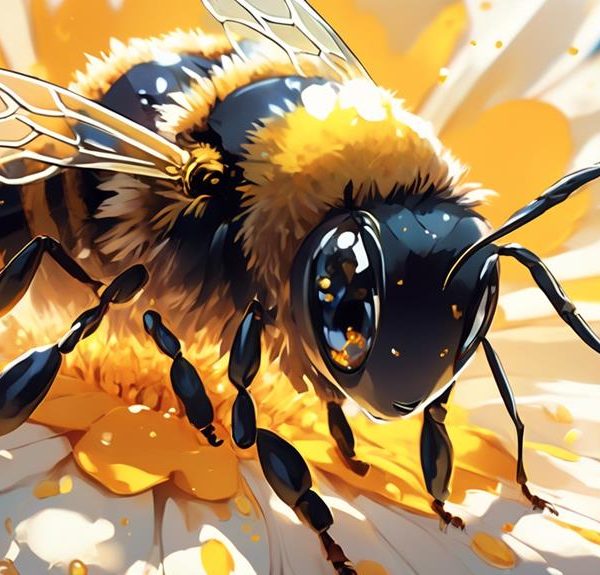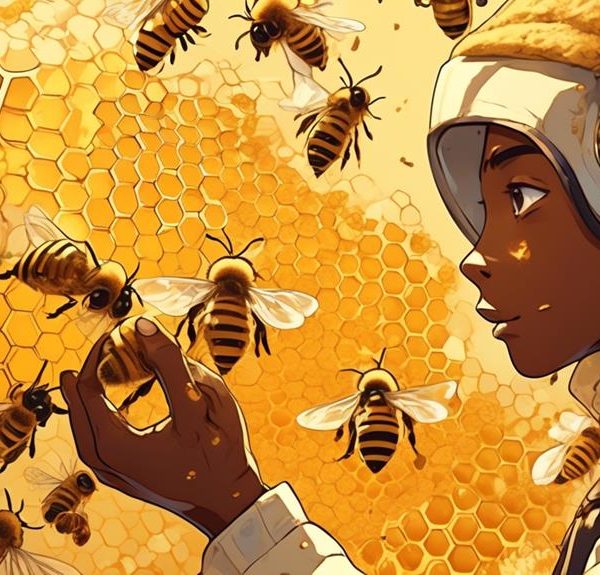Can bees form unexpected bonds with humans? Explore the intriguing, blurred lines of fear, respect, and possible affection in this fascinating investigation.
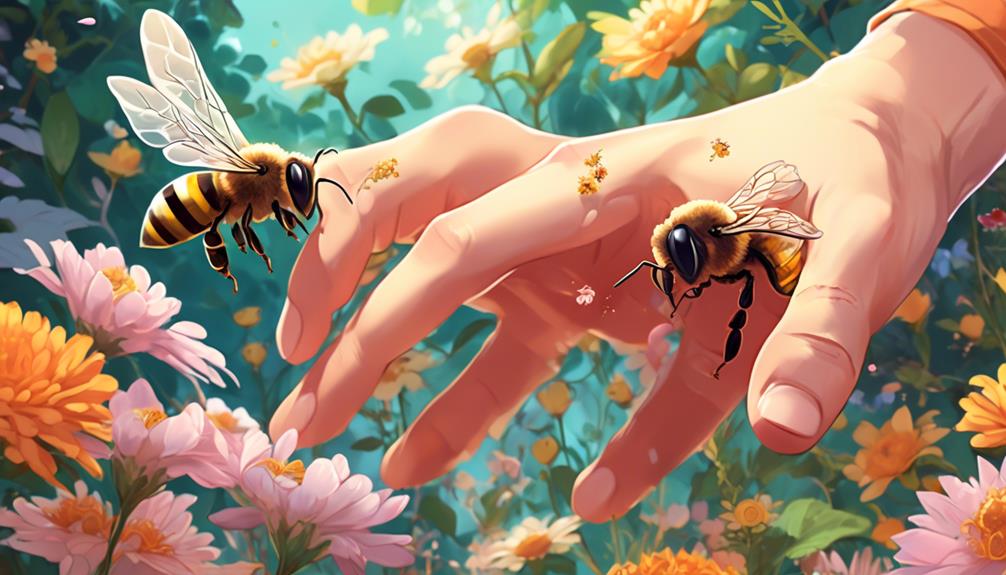
Can Bees Bond With Humans?
In the vast world of human-animal relationships, it's bees—those buzzing, stinging insects—that you might not consider as potential companions. However, you're about to journey into a fascinating exploration of the science and anecdotes surrounding this very concept.
Can these tiny creatures form some sort of connection with us larger beings? While the notion might initially seem far-fetched, you'll find that the answer isn't as black and white as you may presume.
Hold onto your hats and let's dive into the incredible world of bees and humans, a world where the line between fear and respect, and possibly even affection, becomes intriguingly blurred.
Key Takeaways
- Bees have complex communication systems, using signals such as sound, scent, and dance movements.
- Bee behavior and communication are essential to understanding their potential bond with humans.
- Factors such as human behavior, attire, weather, and scent significantly affect interactions with bees.
- Creating a bee-friendly environment and respecting bees can promote positive bee-human relationships.
Understanding Bee Behavior

To grasp the possibility of bees forming bonds with humans, it's essential to delve into the intricacies of bee behavior. As an observer, you'll notice that bees have complex communication systems, primarily through the famous 'waggle dance,' a movement pattern that conveys vital information about food sources.
However, it's not just about food. Bees exhibit an impressive level of cognitive sophistication. They can recognize and remember colors and patterns, which helps them identify flowers. But could this extend to human faces? Some studies suggest that bees can learn to associate certain colors and patterns with rewards, hinting at a form of associative learning.
You must also understand that bees are highly social creatures, living in colonies of up to 60,000 individuals, all working cooperatively. This societal structure is intricate, with each bee having a specific role, from foragers to guards, nurses to the queen. Such a level of organization requires advanced communication and recognition skills.
The Science of Bee Communication
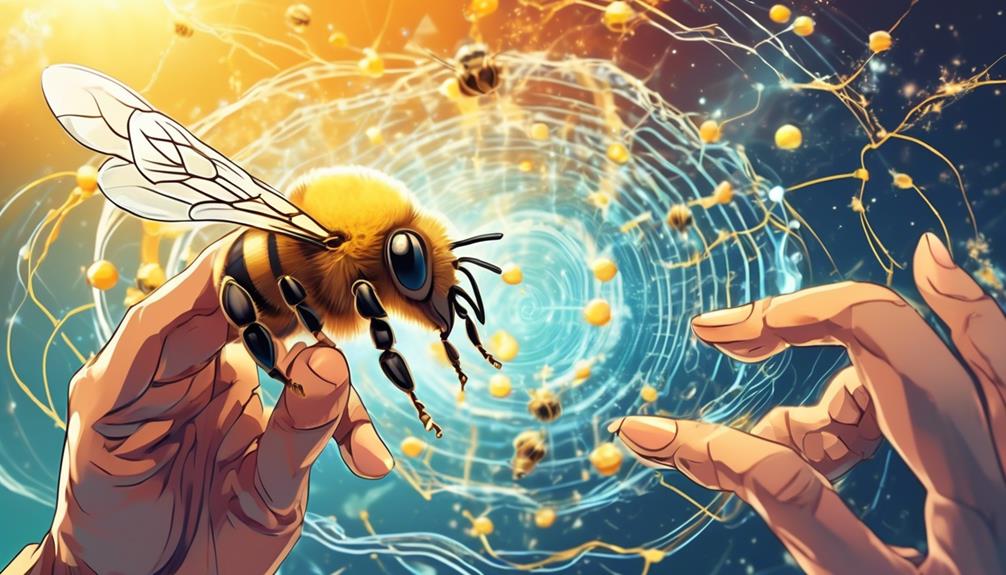
Building on their highly social nature and complex behavior, bees have developed a sophisticated system of communication that's both fascinating and intricate in its detail. Bees utilize a variety of signals to convey information, including sound, scent, and even dance movements.
Let's delve into the famous 'waggle dance,' a series of movements performed by worker bees to communicate the location of food sources. They use this dance to relay precise details about the direction and distance to nectar-rich flowers. This isn't just a random dance, but a calculated performance that's integral to the hive's survival.
Furthermore, bees use pheromones to send messages within the hive. They're chemical signals released by the queen, workers, and drones. Each pheromone carries a specific message, like indicating danger or directing hive activities.
Lastly, bees use sound, specifically vibrations, to communicate. A distressed bee will buzz louder, alerting others of potential threats.
In essence, bees' communication methods are complex and highly efficient, playing a crucial role in maintaining hive harmony. Understanding this could provide insights into how bees might potentially interact with humans.
Factors Affecting Human-Bee Interactions

When it comes to interacting with bees, your behavior, clothing, and even the weather can significantly influence their response toward you.
Bees are highly perceptive creatures that can sense fear or aggression. If you approach a bee with calmness and gentleness, they're less likely to perceive you as a threat. On the contrary, sudden movements or swatting can provoke them to sting as a defense mechanism.
Your choice of clothing can also impact how bees perceive you. Bees are attracted to bright floral patterns that remind them of flowers. Dark colors, on the other hand, can make you seem like a predator to bees, possibly prompting defensive behavior.
The weather, too, plays a crucial role in bee behavior. Bees are less active during cold weather and more active on warm, sunny days. Rain can make bees more aggressive as it disrupts their ability to forage for food.
Moreover, bees are sensitive to certain scents. The smell of bananas, for instance, can trigger alarm pheromones in bees, making them more likely to sting.
Hence, being mindful of your behavior, attire, weather conditions, and even your scent can significantly affect your interactions with bees.
Case Studies: Humans Bonding With Bees
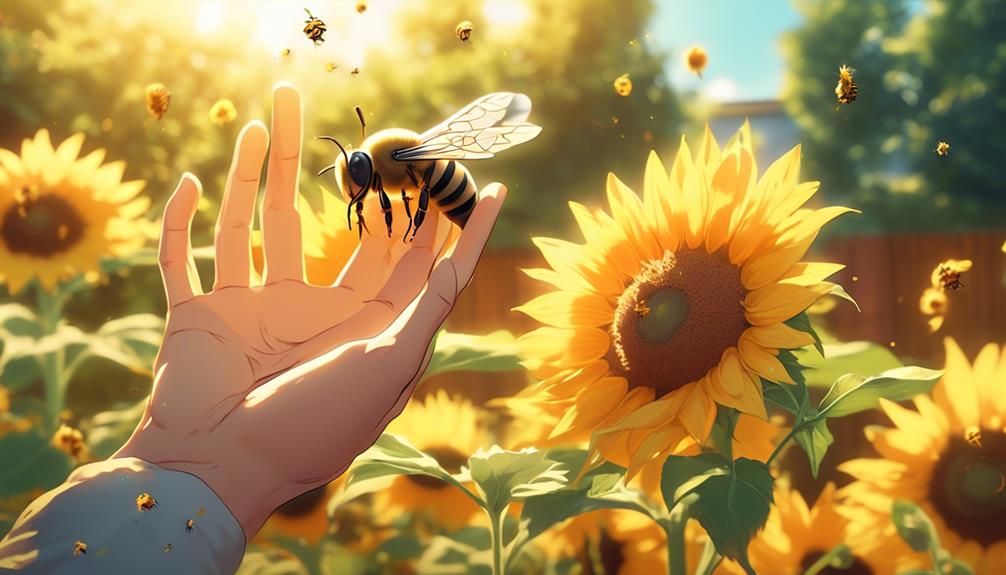
With the understanding of how human actions and conditions can influence bees, let's now explore some fascinating case studies that demonstrate the potential for humans to form bonds with these complex insects.
Take the study of a Slovenian beekeeper who's been working with bees for decades. He's developed a rapport with his hive, claiming to recognize individual bees and their behaviors. He tends to them without protective gear, yet hasn't been stung in years, suggesting a mutual understanding between man and insect.
Then there's the case of a British scientist who conducted an experiment where she trained bees to associate a specific color with food. Over time, the bees began to recognize her, swarming to her presence even when she wasn't wearing the designated color. This indicates a level of cognitive recognition in the bees.
Lastly, consider the urban beekeepers in New York City. These individuals create rooftop hives in a bustling metropolis, showing a unique bond as they care for their bees amidst skyscrapers.
These cases suggest that human-bee bonds are feasible, showcasing the intricate interaction between our species and these vital pollinators.
Debunking Common Bee Misconceptions
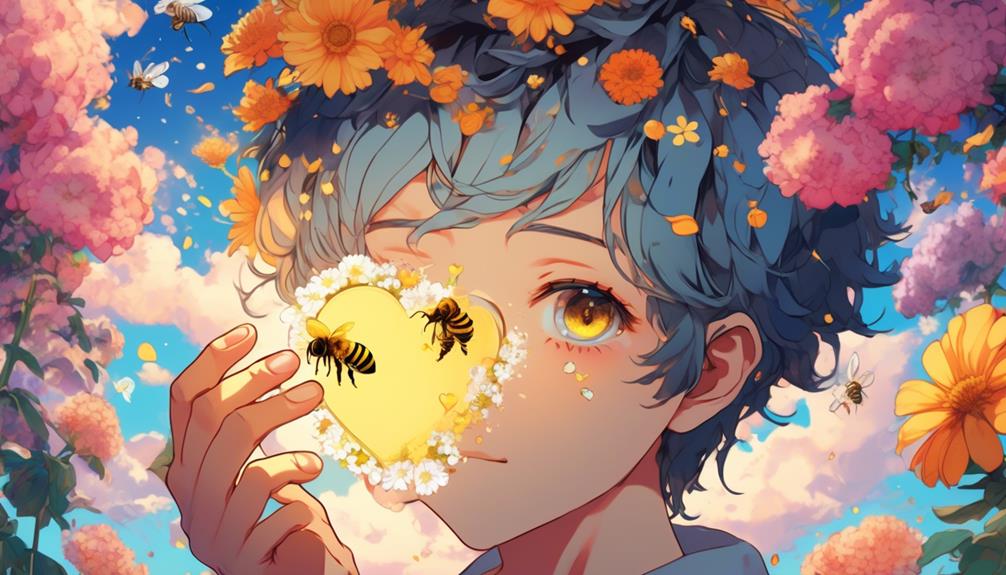
Dispelling common bee misconceptions, it's essential you understand these creatures aren't just mindless drones, but complex beings with individual behaviors, social structures, and cognitive abilities. Contrary to popular belief, not all bees are honey producers. In reality, out of the 20,000 known species, only a small fraction are honeybees.
In addition, it's a common misconception that all bees sting. Male bees, known as drones, can't sting at all. Worker bees, which are female, can only sting once and die as a result. Queen bees, on the other hand, can sting multiple times but rarely do outside their hive.
Furthermore, not all bees live in hives. Many species are solitary and nest in the ground or in wood. It's also not true that bees are aggressive. Most stings occur when bees are defending their hive or when accidentally stepped on or squashed.
In understanding these truths, it's evident bees are far more intricate and less threatening than often perceived. This knowledge not only helps debunk myths but also encourages a deeper appreciation and respect for these vital pollinators.
Promoting Positive Bee-Human Relationships

Understanding these nuances about bees paves the way for fostering healthier and more positive relationships between humans and bees. You can contribute to this by creating a bee-friendly environment. Consider planting native flowers, as they're a rich source of nectar and pollen. Avoid using pesticides in your garden; they're harmful not only to bees but to other pollinators as well.
You can also install a small water source, such as a bird bath, for bees to drink from. Just ensure it isn't too deep to prevent them from drowning. If you're really keen, you might even consider beekeeping. It's a rewarding hobby that also helps to support local bee populations.
Respecting bees is crucial too. Don't swat at them or disturb their hives. Instead, observe them from a safe distance. Remember, bees aren't out to get you. They're simply going about their business. A bee will only sting as a last resort, when it feels threatened.
Through these actions, you can help promote a positive bee-human relationship. It's not just about coexistence, but about mutual benefit. After all, bees play a vital role in our ecosystems and our lives.
Frequently Asked Questions
What Are the Legal Implications of Keeping Bees in Residential Areas?
You'll find that laws about keeping bees in residential areas vary by location. Generally, you're required to register your hive, maintain a certain distance from property lines, and ensure they don't become a nuisance. Some places might also limit the number of hives you can have.
It's best to check your local and state regulations to avoid any legal issues. Remember, responsible beekeeping is key to co-existing with your neighbors.
How Can Someone Become a Professional Beekeeper?
To become a professional beekeeper, you'll need to start with education. Take courses in entomology, particularly focusing on bees. Join local beekeeping societies and get hands-on experience.
It's important to learn about hive management, honey production, and bee diseases. You should also understand business principles if you're planning to sell honey or other bee products.
Lastly, be prepared for hard work and a deep commitment to the welfare of your bees.
Are There Any Notable Historical Relationships Between Humans and Bees?
Yes, there are several historical relationships between humans and bees.
You'll find references to beekeeping in ancient Egyptian hieroglyphics dating back to 2400 BC.
In ancient Greece, bees were considered sacred and their honey a source of wisdom and poetry.
You can also find bees in Native American and Celtic traditions.
What Are Some of the Challenges Beekeepers Face Due to Climate Change?
As a beekeeper, you're facing several challenges due to climate change.
Unpredictable weather patterns can disrupt bees' foraging behaviour and reduce the availability of plants they rely on for pollen and nectar.
Warmer temperatures may also promote the spread of diseases and parasites that can decimate bee populations.
Moreover, extreme weather events, like floods or droughts, can destroy hives.
Thus, climate change presents a significant threat to your beekeeping endeavors.
How Is Honey Collected and Processed From a Bee Hive?
You collect honey by following a meticulous process:
First, you don protective gear to ensure your safety.
Next, you use a smoker to calm the bees, making it easier to work with them.
Then, you remove the hive frames, carefully separating them from the rest of the hive.
Once you have the frames, you scrape off the wax cap that the bees use to seal the honey.
After that, you place the frames in a centrifugal extractor, which spins the honey out.
Finally, you strain the honey to remove any debris and allow it to settle before bottling.
This entire process ensures that you obtain pure, unadulterated honey.
Conclusion
In conclusion, you've seen how bees' complex behaviors and communication systems shape their interactions with humans. You've explored anecdotes of human-bee bonding, debunked common misconceptions, and learned how to foster positive relationships.
It's clear, bees don't just interact with humans – they can form meaningful connections. So, let's not view them as mere stinging insects, but as intelligent creatures capable of bonding.
It's time to buzz about the beauty of our relationship with bees.

